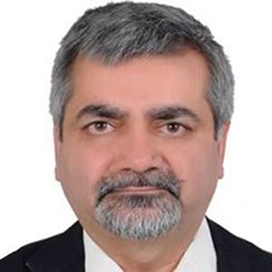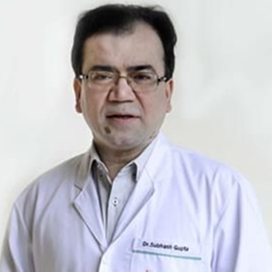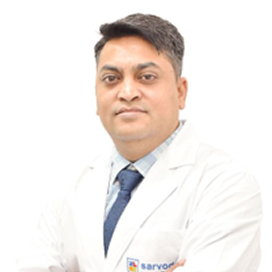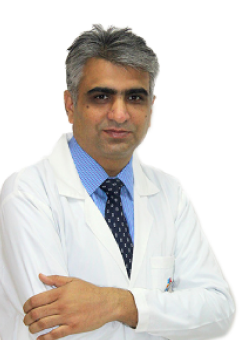Hair Transplant and PRP Treatment
Hair loss is a common concern for both men and women, and it can significantly affect one's self-esteem and confidence. Fortunately, advances in medical technology have made it possible to treat hair loss effectively. Two of the most popular treatments for hair restoration are Hair Transplant and Platelet-Rich Plasma (PRP) Therapy. Both treatments are non-invasive and offer long-term solutions for individuals experiencing thinning hair or baldness.
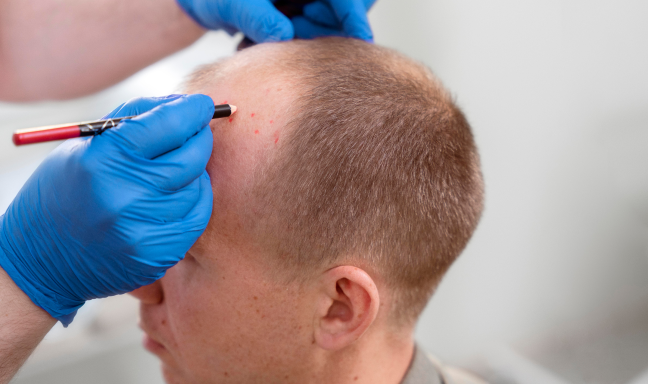
Types of Hair Transplant Surgery
-
Description: FUE is a modern, minimally invasive hair transplant technique where individual hair follicles are extracted from the donor area (usually the back of the head) and transplanted to the thinning or bald areas. No linear incisions are made, and there is minimal scarring.
-
Benefits: Minimal scarring, quicker recovery time, natural-looking results.
-
Description: In FUT, a strip of skin from the donor area is removed, and individual follicular units are dissected from this strip and transplanted to the recipient area. This method typically allows for a larger number of follicles to be transplanted in one session.
-
Benefits: Suitable for patients with significant hair loss; offers better coverage and density in one session.
-
Description: PRP therapy is a non-surgical treatment that involves extracting the patient's own blood, processing it to concentrate the platelets, and then injecting the PRP into the scalp to stimulate hair follicles and promote hair growth.
-
Benefits: Non-invasive, no need for surgery, improves hair thickness and strength, can be used in conjunction with hair transplants.
1. FUE (Follicular Unit Extraction) Hair Transplant (Manual/Robotic)
2. FUT (Follicular Unit Transplantation) Hair Transplant (Manual/Robotic)
3. PRP (Platelet-Rich Plasma) Therapy for Hair Growth
Who Needs Hair Transplant and PRP Treatment?
Hair transplant and PRP therapy are typically recommended for individuals experiencing hair thinning or baldness due to various causes:
-
Male Pattern Baldness: One of the most common reasons for hair loss in men.
-
Female Pattern Hair Loss: Women can also experience thinning hair due to hormonal changes, genetics, or age.
-
Alopecia Areata: An autoimmune condition that causes hair to fall out in patches.
-
Trauma or Injury: Individuals who have lost hair due to burns, accidents, or other injuries.
-
Sufficient Donor Hair: For hair transplants, a person must have enough healthy hair follicles in the donor area to transplant.
-
Stable Hair Loss: Hair loss should have stabilized for at least 1-2 years before undergoing surgery.
-
Realistic Expectations: Patients should understand that the results will vary, and they should be prepared for multiple sessions in some cases.
Candidates generally meet the following criteria:
Investigations Required
Before undergoing hair transplant surgery or PRP therapy, a series of tests and evaluations are necessary:
-
Physical Examination: A thorough examination of the scalp and overall health to determine the best treatment approach.
-
Blood Tests: To assess the patient's overall health and check for any underlying conditions that may affect hair growth or healing.
-
Scalp Analysis: Involves examining the scalp to determine hair density, quality of follicles, and the extent of hair loss.
-
Hair Pull Test: To gauge how much hair is falling out and if the hair loss is reversible.
-
Photography: Before and after photographs to document progress and set realistic expectations for results.
Procedure: How Hair Transplant and PRP Treatments are Done
-
Preparation: Local anesthesia is applied to the scalp to numb the area, ensuring the patient is comfortable during the procedure.
-
FUE Procedure: Individual hair follicles are extracted from the donor area using a tiny circular punch. These follicles are then implanted in the thinning or bald areas.
-
FUT Procedure: A strip of skin is removed from the donor area, and individual hair follicles are dissected and transplanted into the recipient area.
-
Recovery: The patient may experience some swelling, redness, or discomfort for a few days, but recovery time is generally quick.
-
Preparation: A small amount of the patient's blood is drawn (about 10-60 mL).
-
Processing: The blood is processed in a centrifuge to concentrate the platelets and growth factors.
-
Injection: The PRP is injected into specific areas of the scalp where hair loss is occurring. Multiple injections may be required in a single session.
-
Recovery: PRP therapy has minimal downtime, and patients can return to normal activities right after the procedure. Some mild tenderness or swelling may occur at the injection sites.
1. Hair Transplant Procedure
2. PRP Therapy for Hair Growth
Length of Stay in Hospital
-
FUE and FUT: The procedure usually lasts between 4 to 8 hours, depending on the number of grafts being transplanted.
-
Post-Op Care: The patient will need to follow specific instructions regarding scalp care and hair washing. Swelling, discomfort, and scabbing are common during the first few days, but most patients can return to work in 1-2 days.
Hair Transplant Surgery: Typically performed as an outpatient procedure, meaning there is no need for an overnight stay in the hospital. The patient can return home the same day.
PRP Therapy: This is a non-invasive procedure with no hospital stay. It typically takes 30 minutes to an hour to complete. Most patients can resume normal activities immediately after treatment.
Post-Operative Care
After hair transplant surgery and PRP therapy, patients must follow specific post-operative care instructions to ensure optimal results:
-
Avoid Touching the Scalp: Refrain from touching, scratching, or rubbing the treated area for a few days.
-
Hair Washing: Gently wash your hair after the first 3-4 days, following the doctor's instructions.
-
Medications: Patients may be prescribed pain relievers, antibiotics, and anti-inflammatory medications to minimize discomfort and prevent infection.
-
Avoid Sun Exposure: Direct sun exposure should be avoided for several weeks to prevent irritation and damage to the healing follicles.
-
Massage the Scalp: Gently massaging the scalp after treatment helps improve blood circulation.
-
Avoid Washing the Hair for 24 Hours: To allow the PRP to settle into the scalp and stimulate hair growth.
-
Hair Care: Follow the doctor’s instructions on shampooing and avoiding harsh treatments for the first few days.
Hair Transplant Post-Op Care:
PRP Post-Op Care:
Risks of Hair Transplant and PRP Treatment
Although hair transplant surgery and PRP therapy are generally safe, they do come with some risks:
-
Infection: As with any surgery, there is a risk of infection at the incision sites.
-
Scarring: There may be visible scars, especially with FUT, although they can be minimized with proper technique.
-
Poor Growth: Not all transplanted follicles will grow, and some people may not achieve the expected density.
-
Shock Loss: Temporary shedding of existing hair after the procedure is common, but it typically grows back within a few months.
-
Mild Swelling or Redness: Temporary swelling or redness at the injection sites may occur.
-
Infection at Injection Sites: As PRP involves injections, there is a risk of infection.
-
Minimal Results: PRP may not be as effective for patients with severe hair loss or genetic baldness.
Hair Transplant Risks:
PRP Risks:
Cost of Hair Transplant and PRP Treatment
The cost of hair transplant surgery and PRP therapy varies depending on the procedure, location, and clinic. Here is an estimated cost breakdown:
| Treatment | Cost Start From ($) |
|---|---|
| Hair Transplant (FUE/FUT) | 3,000 onwards |
| PRP Therapy (Per Session) | 600 onwards |
Success Rate of Hair Transplant and PRP Treatment
-
FUE/FUT: Around 85-95% of transplanted hair follicles are expected to grow successfully, resulting in natural-looking hair restoration. Full results may take 6-12 months.
-
Long-Term Success: Most patients achieve permanent results as transplanted hair is resistant to future hair loss. However, surrounding non-transplanted hair may continue to thin over time.
-
Effectiveness: Success rates vary, but around 60-70% of patients see noticeable improvements in hair thickness and regrowth after 3-6 months of consistent treatment. Results may not be as dramatic as hair transplant
Hair Transplant Success Rate:
PRP Therapy Success Rate:
Doctors
Our Specialist Doctors

Dr. Shashank Chaudhary
Surgical Oncology, Cancer Care



Dr. Vijayant Devenraj
Cardiac Surgery (CTVS), Thoracic



Dr. PrasoonKant Shamshery
Orthopaedics & Joint Replacement


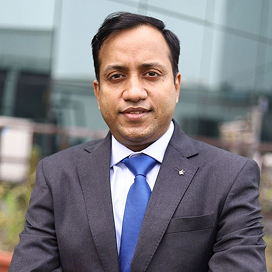
Dr. Vikas Singla
Senior Director & Head – Gastroenterology (Pancreatic-Biliary, Luminal Gastroenterology & Endoscopy Division)



Dr. Anita Sethi
Principal Director & HOD - Ophthalmology (Max Panchsheel & Max Saket)


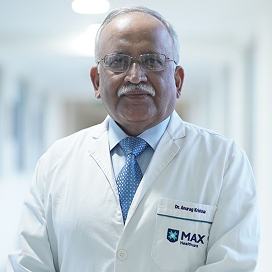
Dr. Anurag Krishna
Chairman - Paediatrics & Paediatric Surgery Paediatric (Ped) Surgery, Paediatric (Ped) Urology



Dr. Bipin Walia
Vice Chairman & Head- Neurosurgery for Max Saket Complex & Vice Chairman- Neurospine, Max Saket



Dr. Dinesh Khullar
Chairman - Nephrology & Renal Transplant Medicine, Max Saket Complex


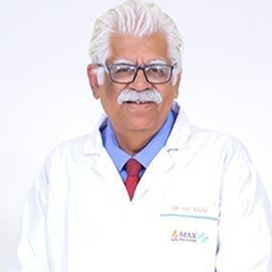
Dr. H.N. Bajaj
Principal Director (Orthopaedics) & Head (Spine Surgery) Orthopaedics & Joint Replacement, Spine Surgery, Arthroscopy & Sports Injury



Dr. Harit Chaturvedi
Chairman - Max Institute of Cancer Care Cancer Care / Oncology, Thoracic Oncology, Surgical Oncology, Robotic Surgery, Head & Neck Oncology, Breast Cancer


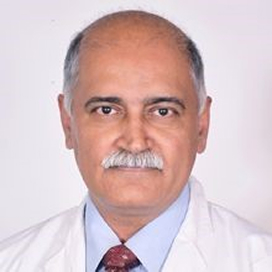
Dr. Kulbhushan Singh Dagar
Principal Director, Chief Surgeon & Head - Neonatal & Congenital Heart Surgery Paediatric (Ped) Cardiac Surgery, Cardiac Sciences, Paediatrics (Ped)



Dr. Pradeep Chowbey
Chairman - Max Institute of Laparoscopic, Endoscopic, Bariatric Surgery & Allied Surgical Specialities



Dr. Sunil Choudhary
Principal Director & Chief of Plastic Surgery (Max Institute of Reconstructive, Aesthetic, Cleft & Craniofacial Surgery (Miracles) Aesthetic And Reconstructive Surgery



Dr. Abhishek Mishra
MBBS, MS - Orthopaedics Orthopedic surgeon, Joint Replacement Surgeon


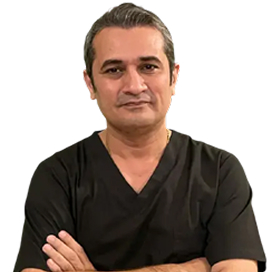
Dr. Vineet Malhotra
MBBS | MS – General Surgery | DNB – Urology/Genito – Urinary Surgery



Dr. (Lt Col) Ashok Kumar
Senior Consultant & Head - Radiation Oncology



Dr. Aman Jyoti
Senior Consultant – Paediatrics Cardiac Anaesthesia & Cardiac Intensive Care



Dr. Amit Kumar
Associate Director & Head (Unit I) - Interventional Cardiology



Dr. Anushtup De
Senior Consultant & Head (Unit l) - General & Minimally Invasive Surgery



Dr. Arjun Goel
Senior Consultant & Head (Unit II)- General & Minimally Invasive Surgery



Dr. Dinesh Pendharkar
HOD & Director - Medical Oncology, Cancer Care, Haematology & BMT


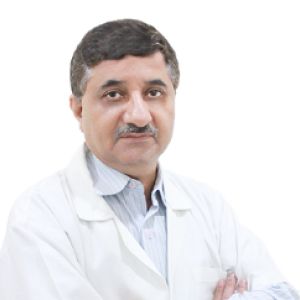
Dr. Subhash Hakoo
HOD & Director - General & Minimally Invasive Surgery



Dr. Sujoy Bhattacharjee
HOD & Director - Robotic Joint Replacement



Dr. Tanmay Pandya
HOD & Director - Nephrology & Renal Transplantation



Dr. Ved Prakash
Senior Consultant & Head - Cardiothoracic & Vascular Surgery



Dr. Anuj Agrawal
Sr. Consultant Department of Orthopaedics & Joint Replacement



Dr. Ashwini Kumar Singh
Senior Consultant & Head Plastic, Reconstructive & Cosmetic Surgery



Dr. Nikhil Gupta
Orthopaedics, Arthroscopy & Joint Replacement Surgery



Dr. Sparshi Jain
Consultant in Department of Ophthalmology



Dr. (Maj) Ravi Shankar
Consultant - Haemato-Oncology & BMT MBBS, MD (Pediatrics) Fellowship PHO & BMT



Dr. Amrita Tiwary Vyas
Consultant, Neurosciences/Neurosurgery, Brain & Spine Specialist



Dr. Ankit Agrawal
Consultant, Neurosciences/Neurosurgery, Brain & Spine Specialist



Dr. Sudhir Sharma
Director - Minimal Access, Robotic, Bariatric and General Surgery, MBBS, MS, MBA, FIAGES, FICLS



Dr. Sujoy Bhattacharjee
HOD & Director - Robotic Joint Replacement


Book Appointment
Complete the form below to schedule your appointment.
Begin Your Health Treatment Journey with Us
By utilizing our services, you'll find it easier to improve your well-being and feel better."
Consult Now








